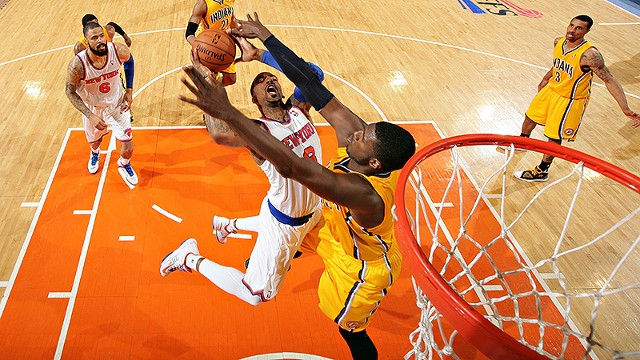
At all levels of play, the principle verticality is difficult to officiate. It’s just as challenging to coach. Yet, just because it’s difficult does not mean it’s something that we should avoid teaching—especially since the ability to defend at the rim without fouling is the difference between winning and losing.
So, what is the “rule of verticality” all about?
Essentially, it’s all about the act of staying vertical when defending (or contesting) a shot at the rim. The NBA rulebook states[1]:
“A player is entitled to a vertical position even to the extent of holding his arms above his shoulders, as in post play or when double-teaming in pressing tactics.”
One common mistake in the interpretation of verticality is that a defender must be stationary and on the ground for it to apply. That’s not true. A defender is allowed to jump straight up in an effort to block a shot. And, in doing so, they can absorb contact from the offensive player *without* being whistled for a foul.
SBNation summarizes it well with this analogy:
“The defensive player is allowed to jump straight up and down with his arms extended, but he’s not allowed to jump into the driver. He’s allowed to absorb contact, but he cannot initiate it. He can be a tall pillar in midair, but as soon as that pillar tilts, it’s a foul.”
Verticality is an important concept to introduce when teaching shot blocking and how to defend the rim.
Introduce the concept of verticality to your players and then give them opportunities to play around with it in a modified games or drills. This gives you a chance to work on the defensive skill and the offensive counter at the same time. Not enough time is spent teaching players the technique in shot blocking and how to protect the rim without fouling.
(Note: The counter move for the offense, as pictured above, is to use width of one’s body to protect the ball. More visuals are here and here.)
The enforcement or calling of this rule is difficult even for the most experienced referee; so, know that your players will also have a steep learning curve too.
Let them have fun and make mistakes.
/sef.